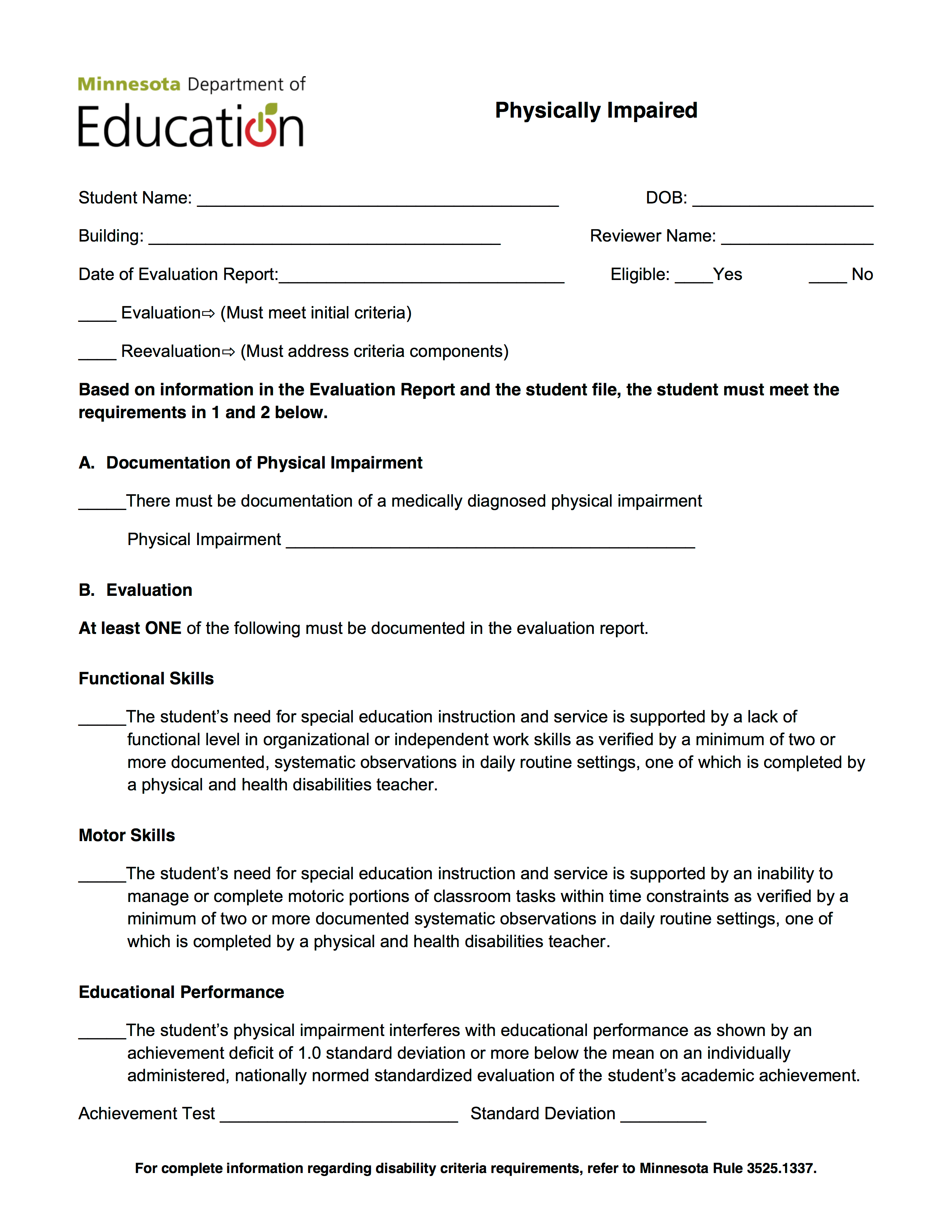
Orthopedic Impairment
Disability Label & Prevalence |
Definition |
General Characteristics |
Identification & Assessment |
Educational Approaches |
Educational Placement Alternatives |
Orthopedic Impairment 1% of Special Education Population |
IDEA - a severe orthopedic impairment that adversely affects a child’s educational performance. The term includes impairments caused by a congenital anomaly (e.g. clubfoot, absence of some member, etc.), impairments caused by disease (e.g. poliomyelitis, bone tuberculosis, etc.), and impairments from other causes (e.g., cerebral palsy, amputations, and fractures or burns that cause contractures). |
Depends on disability and individual |
Depends on disability and individual |
Teaming and Related Services: physical therapists, occupational therapists Environmental Modifications Assistive Technology Animal Assistance Special Health Care Routines: seating and movement, lifting and transferring students Independence and Self-Esteem |
General Education Classroom Resource Rooms Separate Classrooms Home/Hospital |
Description of 2 evidence-based strategies |
Parallel Curriculum: using adaptive methods and assistive technologies for mobility, communication, and daily-living tasks; increasing independence by self-administering special health care routines; and learning self-determination and self-advocacy skills. (Heward, 2012) Scientific Research Based Interventions (SRBI): a major advantage is the early use of valid and reliable curriculum-based assessments that inform specific interventions. Equally important, the [SRBI] approach requires ongoing monitoring to ensure that teaching is bringing about improvement in targeted movement skills and that needed interventions are implemented appropriately. SRBI is set up in a three-tier system. Tier 1: Identified students would receive individualized instruction within the general physical education setting. Tier 2: students receive intensive small-group instruction, along with instruction provided in tier 1. Tier 3: intervention, which would be an even more intensive, more individualized program of instruction. (Connecticut State Department of Education) |
Practitioner Based Article related to this area: Include reference and summary of the article. |
Use of Environmental Modifications: enables a student with physical disabilities to participate more fully and independently in school. These modifications include adaptions to provide increased access to a task or an activity, changing the way in which instruction is delivered, and changing the manner in which the task is done. Some examples of these would be barrier free architecture, paper cups available for students in wheelchairs, and moving activities to more accessible places in the school if needed. (Heward, 2012) |
MN Eligibility Checklist

